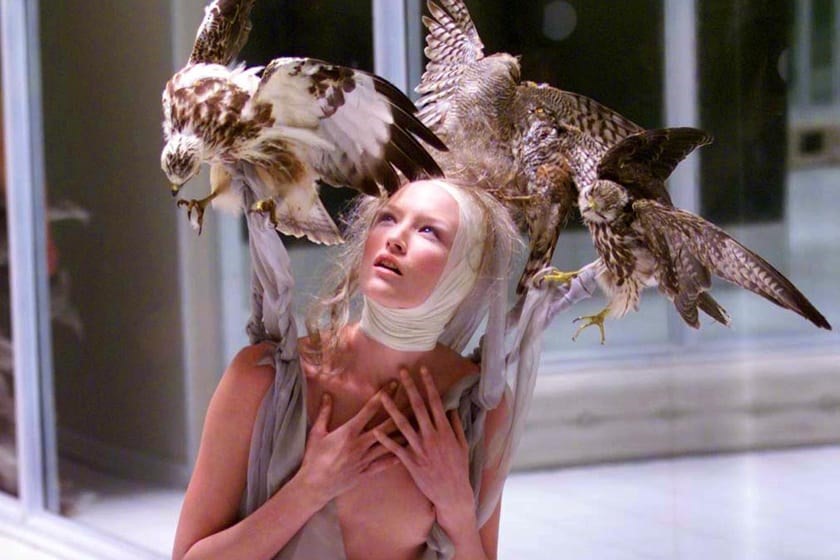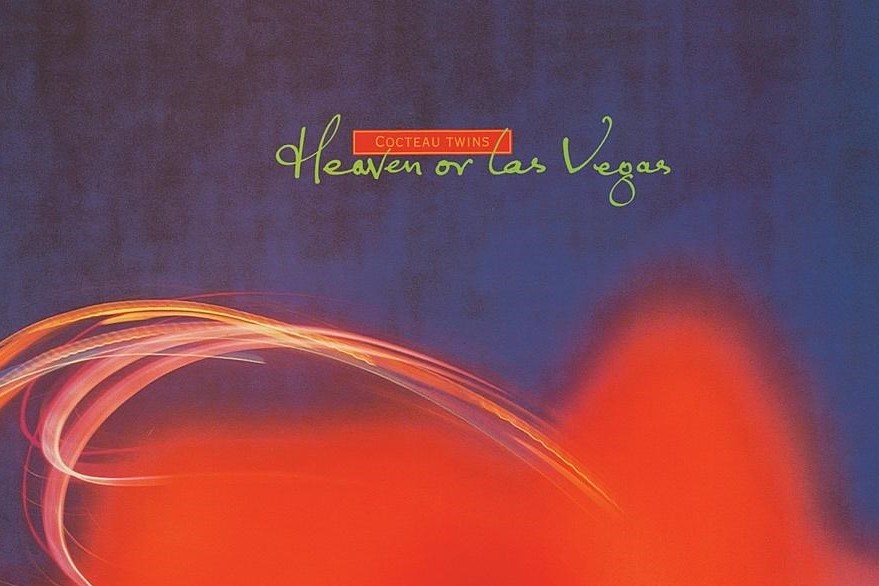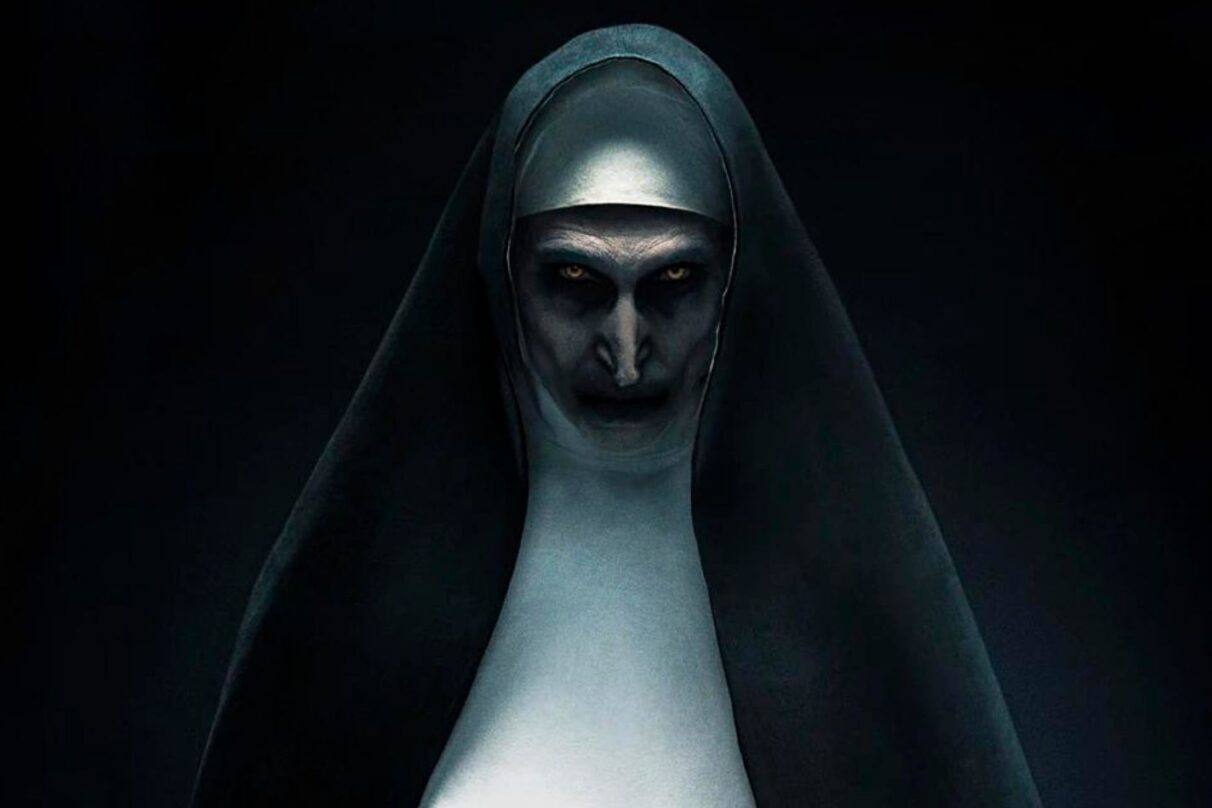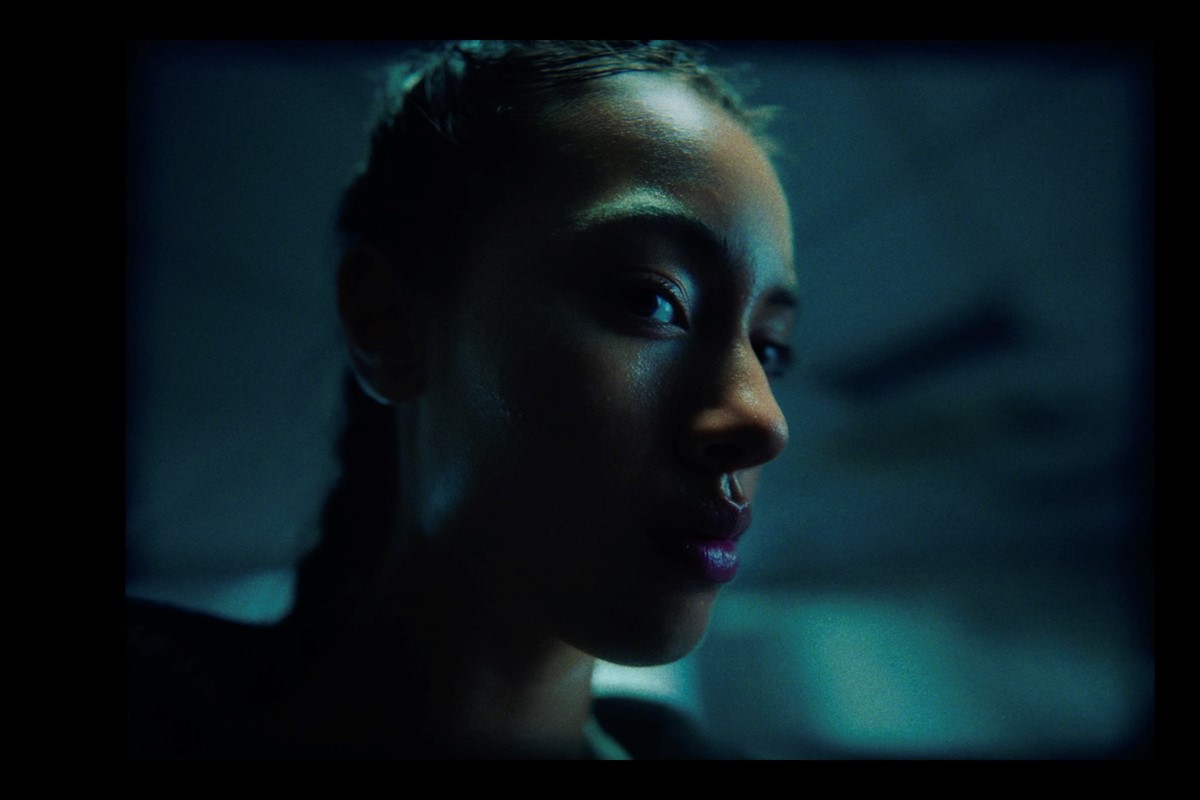
The Kingdom of Dreams examines the dark side of fashion’s ‘Golden Era’
A new four-part series travels back to the 90s, when John Galliano, Tom Ford, Alexander McQueen, and Marc Jacobs made a Faustian pact with success
The steady perforations of a sewing machine; the surface of a dressmakers’ dummy ravaged with flames; a thorned rose oozing thick globules of blood. “This is a gothic fairytale,” says Peter Ettedgui, who, together with Ian Bonhôte, was the filmmaker behind 2018’s seminal McQueen documentary. “Because the notion of beauty and corruption, and the tensions between them, seem to sit so much within these stories.” Much like the image of Alexander McQueen’s skull – festooned in flowers and gilded fireflies – the duo’s latest project, Kingdom of Dreams, is accented with romance and horror.
The four-parter charts the rise and demise of fashion’s “golden era”, where John Galliano, Alexander McQueen, Marc Jacobs, and Tom Ford made a Faustian pact with some of Europe’s most prolific businessmen, shaking the dust off flailing fashion houses and making billions in the process. With unseen, archival footage, and cameos from Stephen Jones, Teri Agins, Lily Cole, and Tim Blanks, the series documents the grandeur of high fashion during the 90s and 00s, but also reads as a cautionary tale – one where ambition breeds addiction, suicide, and hostile takeovers. “Fashion as we know it is still a new phenomenon, it’s only been built over the past 30 years. And these designers, because they were working class boys from places like south London and Texas, came to it with their eyes wide open. But nobody could have predicted its consequences,” says Bonhôte.




“Money and creativity, commerce and genius. How do we handle all of those things?,” he adds. “Society continues to battle with that kind of question.” Based on the book Deluxe: How Luxury Lost its Lustre by Dana Thomas, Ettedgui and Bonhôte lay bare the differences between then and now – like when Jacobs, still a relatively unknown art school graduate, became the first person to design ready-to-wear at Louis Vuitton, or when Ford – ”the Steve Jobs of fashion” – originated the Kering group. With the exception of Maximilian Davis at Ferragamo, that scale of opportunity is rarely afforded to young designers of today, and though it’s tempting to wist for the past, Kingdom of Dreams pushes against rose-tinted nostalgia. “We need to be very careful with calling something a “golden era”, because then it’s not allowing new generations of extremely talented people to establish themselves and forge their own path.”
Below, we catch up with Ettedgui, Bonhôte, and director Camilla Hall ahead of the documentary’s New York premiere, where they speak about the enduring “joy of dressing”, couture’s unlikely relationship with the Rana Plaza collapse, and the unique genius of McQueen.
Hey everyone! Could you tell me a little bit about what inspired you to take this project on?
Peter Ettedgui: So, the idea first arose while we were making McQueen. We were fascinated by all the politics and rivalries that were going on at the time, and the more we read about it in Dana Thomas’ book, we knew it would make an interesting story. John Galliano was competing with Alexander McQueen, Tom Ford and Francois Pinault were tussling over him too, while Pinault and Bernard Arnault were going head to head with Gucci Group and LVMH. We then discovered all these archives that we had never seen before, so we just thought ‘that’s how we’ll tell the story – through the archives’.
What were some of the themes or ideas that you wanted to put forward?
Ian Bonhôte: We wanted to remind everyone that fashion is an art form – and that art form is expressed through Haute Couture. So, we wanted to educate a new generation of people on how that world has changed – how corporations took over these small, family-run houses and turned them into massive conglomerates, making it more about branding than art. It’s not an evil plot, it’s just what globalisation has done to us, and the nineties had some amazing moments. It was the pinnacle, where money came, and creativity was there.
Camilla Hall: I’ve never made a fashion film before but I felt such similarities between what the designers were experiencing with corporatisation and what we’re currently seeing in the film industry. How do we as creatives survive within that space? How do we thrive and take the positives?
What were some of the most surprising things you learnt about this era in fashion?
Camilla Hall: Well, it was The Game of Thrones of fashion. It was about business, power struggles, and men getting rich. I was once a business reporter for the Financial Times so that aspect was really fascinating to me. At a time when nobody was really talking about mental health, the pressures and expectations that the creatives were under – how many collections they were forced to make, and how difficult that was to navigate – was really moving.

I’m interested in the moral stance you take on the major conglomerates. On one hand they have done an amazing job – reinvigorating the industry by hiring working class kids straight from fashion school – but did they not push them to a psychological extreme?
Peter Ettedgui: We all have an ambivalent relationship to that question. Both Bernard Arnault and Francois Pinault are both truly remarkable figures – they’re disruptors and had a vision that nobody else had. So we thought that was worth celebrating. But yes, the hostile takeovers were hostile and there was an element of treating designers as pawns in a much bigger chess game, where ambition trumped everything.
Ian Bonhôte: But don’t you think there’s a pact between the designer and corporation to achieve their dream? I don’t think LVMH or the Gucci Group knew the designers would go on those journeys. There’s no bad guy – both have gone down routes without knowing. Haute Couture may be 150 years old but fashion, as we know it, is still a new phenomenon, it’s only been built over the past 30 years. And these designers, because they were working class boys from places like south London and Texas, came to it with their eyes wide open… but nobody could have predicted its consequences. These people were victims of their own success.
Do you think it’s accurate to describe that period in history as fashion’s golden era?
Ian Bonhôte: We need to be very careful with calling something a “golden era” because it’s not allowing new generations of extremely talented people to establish themselves and forge their own path. I’m passionate about fashion but fashion has moved on – you have some of the greatest British artists using makeup to create their art right now. If Isamaya Ffrench had lived at the time of McQueen she would be doing all of his shows. But I think the warning here is in selling your name, because you sell your identity and you can never claim it back.

But I think people, particularly of my generation, watch these shows on YouTube and are left awe-struck by how theatrical they were, especially when fashion shows are so much less overblown now.
Camilla Hall: I think this era was an era of success in many different ways and there were shows in the “Golden Age” that were just such high art, one-off experiences that people will remember forever. But now we’re in a time of overconsumption and that’s going to affect how people express themselves – the environment is going to have to trump excess because we’re in such a dire situation. It’s now about finding new modes of beauty that’s outside of how it was done in the past.
To that point, it was really interesting to see how you connected the desire that these houses engendered to the rise of fast fashion, and ultimately the collapse at Rana Plaza. Can you speak on that?
Camilla Hall: It’s about the idea of planned obsolescence and the role that magazines played in dictating what’s ‘in’ and what’s ‘out’ so that a brand can sell its next collection. It sounds so obvious but as an average consumer you’re not necessarily thinking about that.
Peter Ettedgui: That’s why it was important to include McQueen’s Horn of Plenty – which is one of the most extraordinary fashion shows and absolutely speaks to this theme, bringing together the world of fast fashion with the globalisation of couture. He was researching landfills for that show and the actual looks satirised the fact that people continually go back to the same Yves Saint Laurent and Dior styles and just reproduce them. It was about a year before McQueen killed himself and the joy had gone out of fashion for him at that point.

Depictions of fashion throughout the media are generally quite negative and the idea of the industry having this glamorous exterior while being rotten inside is an alluring narrative for people. Why do you think that is?
Ian Bonhôte: Audiences think the frivolous aspect of fashion is ridiculous but perhaps there’s a little bit of jealousy, too – because you do have a lot of very beautiful, talented, intelligent people working within the industry. After all, society loves to pick on the cool kid in the playground, which is how fashion tries to depict itself.
Peter Ettedgui: It’s because it’s a three trillion dollar industry. It’s deadly serious. I remember we all passed around that same clip in The Devil Wears Prada when Miranda Priestly picks up on the ingenue’s contempt for fashion and gives the cerulean blue speech – you have to take that seriously, because it has financial worth and sway and influences all our lives.
Both in McQueen and Kingdom of Dreams there is a tension between the idea of creation and destruction – be it the flower skull or the disintegrating mannequin. Was that something you deliberately played with?
Camilla Hall: Well, nothing is a coincidence in filmmaking. McQueen is such a beautiful film and I was extremely inspired by it – and that process of creating those metaphors started very early on in the process. All the way through, we were talking about the different emotions that we wanted to feel at each point, and we kept coming back to these metaphors – like the sewing machine was so interesting because it was a symbol of labour and intensity, even in the sound it creates.
Peter Ettedgui: We’ve all said at different times that we’ve seen this as a gothic fairytale. You think of Snow White and the notion of beauty and corruption, and the tension between them, and that seemed to sit so much in these stories.

Was there anything you were forced to cut that you wish could have been included?
Camilla Hall: There was some very salacious gossip that we couldn’t put in, but oh gosh, it’s so hard to get these shows down to 45 minutes – it’s heartbreaking what you’re forced to leave out. I would have loved to have spent more time on Marc Jacobs’ grunge show, for example. I mean, he was fired and hated for producing a show that is now so iconic.
Ian Bonhôte: It’s a very hedonistic world! But we wanted to keep it classy. We could have leaned further into the gossip but we love these characters and the industry too much to fall into the tabloid trap.
Peter Ettedgui: I’m haunted by something that Dana Thomas said, which we had in a cut at some point – and still is there to an extent – but she said “this is stuff you don’t need” about how the industry has become so branded and logo-heavy. That’s a line that sticks it to us, as people that love brands and logos.
Ian Bonhôte: But then there’s that statement which John Galliano says about the “joy of dressing” – if that makes people feel happy and good, then go for it. Creativity is still alive – youth, madness – it won’t die.
Has making this film changed your perception of fashion or calcified your views?
Camilla Hall: I learnt that if you just buy black things then you’re going to be fine; the way to avoid planned obsolescence is to just wear black. In fact, when we were doing interviews we had to ask people not to wear black, because otherwise every single person probably would have been wearing the same thing. But the idea of designers as artists was a real lesson to me – the art that these people were creating was so profound.
Distributed by Freemantle, Kingdom of Dreams is now available to watch on NOW TV and Sky. Click through the gallery below to revisit Galliano’s tenure at Dior.



